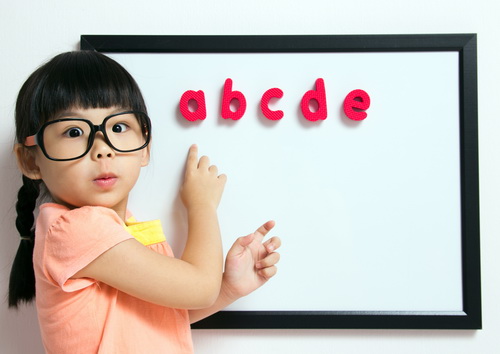Is your child below grade level in reading, writing or even playing sports?
It could be a sign of visual information processing dysfunction.
A visual processing disorder can cause problems with the way the brain processes visual information. There are many different types of processing disorders and symptoms. Visual processing difficulties (VPDs) affect many students diagnosed with language-based learning disabilities.
If your child has been diagnosed with a language-based learning disability, contact an eye doctor near you to have their vision evaluated.
SEE RELATED: Introduction to Visual Processing
Types of visual processing disorders
There are several different types of visual processing difficulties, each with its own symptoms. An individual can have more than one type of visual processing difficulty.
1. Visual discrimination
Visual discrimination is the ability to recognize similarities and differences between shapes, sizes, objects, colors and patterns.
Signs of visual discrimination issues include:
- Confusion of letters and numbers
- Difficulty finding information during open book quizzes
- Losing their place while reading aloud
- Trouble enjoying activities like puzzles or reading
- Trouble recognizing differences and details
2. Visual figure-ground
Figure-ground perception is the ability to filter visual information that isn’t immediately relevant so that you can focus on the relevant visual information.
Signs of figure-ground issues include:
- Slow reading speed
- Trouble concentrating on books with small print and/or many words on a page
- Trouble copying notes from the board
- Trouble picking out details in words or images
- Trouble scanning for information contained in written materials.
3. Form constancy
Form constancy is a visual perceptual skill that allows you to understand that a form, shape or object stays the same even when it changes its size, position or is in a different environment.
Signs of form constancy issues include:
- Difficulty finding missing items quickly, even if they are in plain sight
- Difficulty recognizing objects when placed in a new location
- Difficulty recognizing familiar places or objects in photographs
- Trouble judging distances and heights
- Trouble reading unusual fonts
4. Visual closure
Visual closure is a visual perceptual skill that allows you to know what an object is even when the object is only partially visible.
Signs of visual closure issues include:
- Slow reading fluency
- Needs extra time to sound out words they already learned
- Trouble putting together jigsaw puzzles
- Trouble finding an item if part of it is hidden
- Trouble pulling the correct book or paper from a stack
- Trouble with games that require guessing an item based on a close-up photo
5. Visual memory
Visual memory is the ability to immediately recall what the eye has seen.
Signs of visual memory issues include:
- Spelling difficulties
- Difficulty recognizing numbers or letters
- Difficulty copying information from the board or a book
- Difficulty with sight words
- Reduced math skills
- Poor reading comprehension
6. Visual sequential memory
Visual sequential memory is the ability to remember and recall a sequence of objects and/or events in the correct order.
Signs of visual sequential memory issues include:
- Difficulty remembering forms (including orientation, size, shape and color) or characters in the correct order
- Difficulty spelling – misses, adds or jumbles letters within words
- Often whispers or talks while writing
- Trouble recognizing and remembering patterns
7. Visual motor integration
Visual motor integration is the ability to interpret visual information and respond with a motor action.
Signs of visual motor integration issues include:
- Reduced hand-eye coordination
- Dislikes sports
- Difficulty copying from the board
- Difficulty staying within the lines when coloring
- Messy handwriting
How can vision therapy help?
A vision therapy treatment program can improve a child’s visual processing abilities through eye exercises that help retrain the eyes and brain to work together.
Vision therapy is a customized program that will develop the child’s visual skills, leading to improved classroom performances.
LEARN MORE: Guide to Vision and Learning Difficulties
Schedule an eye exam with a vision therapy eye doctor near you who can diagnose and treat any vision problems your child may have.


